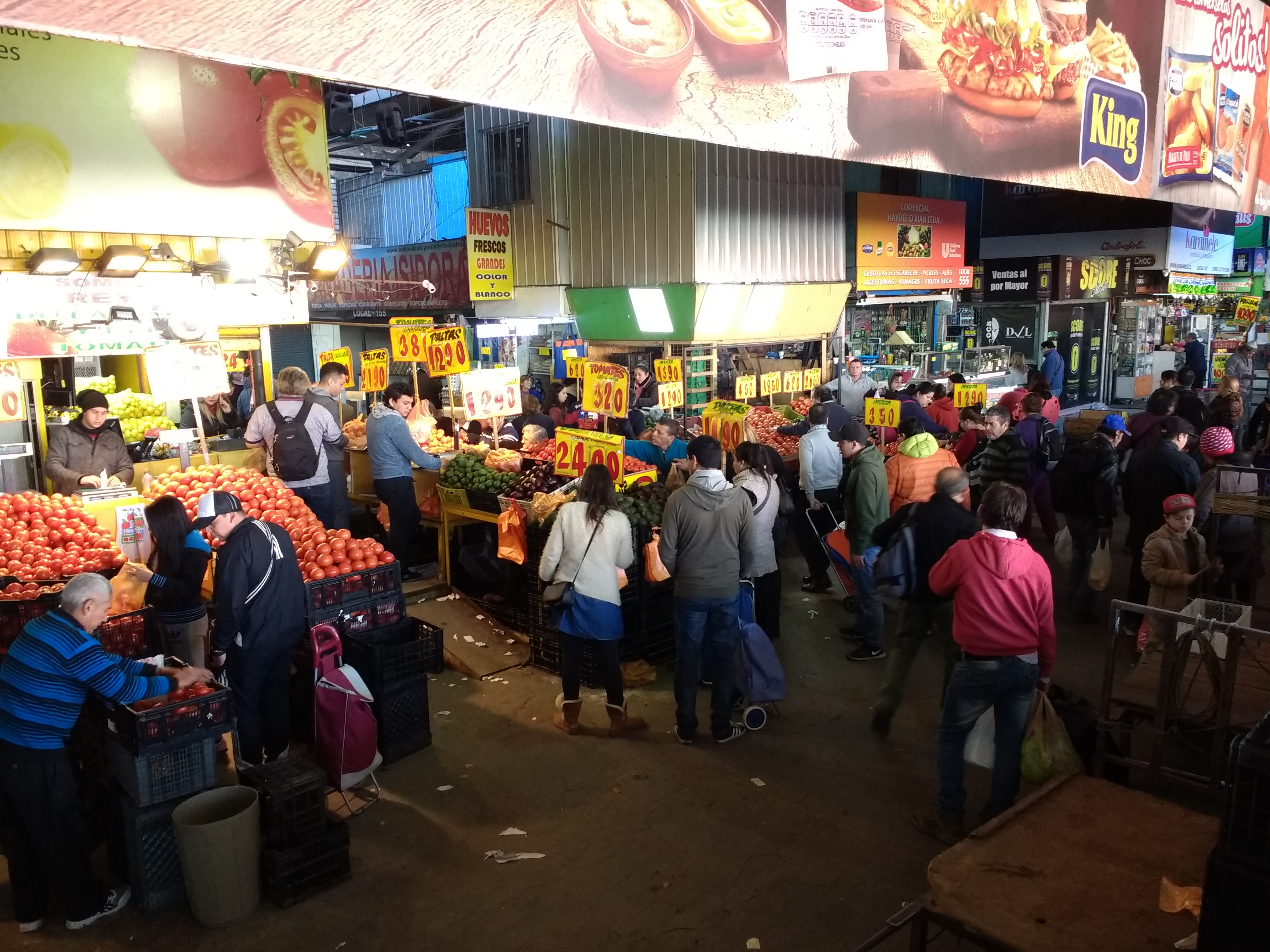Vega Central on:
[Wikipedia]
[Google]
[Amazon]

 La Vega Central, also known as the Feria Mapocho (Mapocho market), is a
La Vega Central, also known as the Feria Mapocho (Mapocho market), is a
La Vega Central
. Chile.com. Retrieved October 26, 2012 La Vega Central is also home to over 500 dairy, meat, goods and merchandise stores, and offers a variety of
This is Chile. September 27, 2010. Retrieved 12 November 2012 La Vega Central has now achieved iconic status in Chile's capital. A long-time vendor at the market was quoted as saying, “Markets nowadays compete (for customers) by using marketing, but La Vega has never had to resort to this. It subsists on its own creation and that is its magic.”
Memoria Chilena. Retrieved October 26, 2012 In the 19th Century, when the area was known as “La Vega del Mapocho” (the Mapocho market) the land was delimited and designated for produce consumption, taking advantage of the channelling of the

 La Vega Central, also known as the Feria Mapocho (Mapocho market), is a
La Vega Central, also known as the Feria Mapocho (Mapocho market), is a market
Market is a term used to describe concepts such as:
*Market (economics), system in which parties engage in transactions according to supply and demand
*Market economy
*Marketplace, a physical marketplace or public market
Geography
*Märket, an ...
located at the far south of Recoleta commune in Santiago de Chile
Santiago (, ; ), also known as Santiago de Chile, is the capital and largest city of Chile as well as one of the largest cities in the Americas. It is the center of Chile's most densely populated region, the Santiago Metropolitan Region, whose ...
, almost at the north bank of the Mapocho River
The River Mapocho ( es, Río Mapocho) ( Mapudungun: ''Mapu chuco'', "water that penetrates the land") is a river in Chile. It flows from its source in the Andes mountains onto the west and divides Chile's capital Santiago in two.
Course
The Mapo ...
. A wide variety of products are sold in its surrounds, principally fresh fruit and vegetables from the Chilean Central Valley
The Central Valley ( es, Valle Central), Intermediate Depression, or Longitudinal Valley is the depression between the Chilean Coastal Range and the Andes Mountains. The Chilean Central Valley extends from the border with Peru to Puerto Montt in ...
.Dreisziger, AlejandroLa Vega Central
. Chile.com. Retrieved October 26, 2012 La Vega Central is also home to over 500 dairy, meat, goods and merchandise stores, and offers a variety of
Chilean cuisine
Chilean cuisine stems mainly from the combination of traditional Spanish cuisine, Chilean Mapuche culture and local ingredients, with later important influences from other European cuisines, particularly from Germany, the United Kingdom and Fr ...
. Today, hundreds of thousands of people pass daily through La Vega's 60,000 square meters of stalls.The merchants of La Vega: part of Chile's living historyThis is Chile. September 27, 2010. Retrieved 12 November 2012 La Vega Central has now achieved iconic status in Chile's capital. A long-time vendor at the market was quoted as saying, “Markets nowadays compete (for customers) by using marketing, but La Vega has never had to resort to this. It subsists on its own creation and that is its magic.”
History
From the colonial era, farmers gathered in La Chimba area to sell their products. In the 18th century, with the construction of the Puente de Calicanto, a large number of vendors and merchants began to set up on its surroundings.Vega CentralMemoria Chilena. Retrieved October 26, 2012 In the 19th Century, when the area was known as “La Vega del Mapocho” (the Mapocho market) the land was delimited and designated for produce consumption, taking advantage of the channelling of the
Mapocho River
The River Mapocho ( es, Río Mapocho) ( Mapudungun: ''Mapu chuco'', "water that penetrates the land") is a river in Chile. It flows from its source in the Andes mountains onto the west and divides Chile's capital Santiago in two.
Course
The Mapo ...
. New storage houses were also built to load and sell produce. An initiative by Agustín Gómez García led to the construction of La Vega Central in 1895, with the installation of warehouses made of solid material inaugurated in 1916.
References
{{coord, 33.4302, S, 70.6497, W, source:wikidata, display=title Economy of Chile Retail markets in Chile